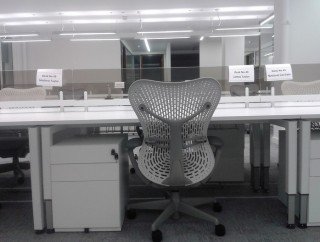- Dettagli
- Categoria: Women views on news
- Pubblicato: 27 Febbraio 2014
 The number of women in work is at its highest since records began 43 years ago.
The number of women in work is at its highest since records began 43 years ago.
According to the Office for National Statistics (ONS), the rate of female employment hit 67.2 per cent last year, which means that women now make up a record-breaking 46 per cent of the UK workforce.
Over 190,000 men and women entered into employment between October and December of last year, bringing the number of women in work to 14 million and the total workforce to 30.15 million.
The data, released on 19 February, also revealed that 122,000 more women are working full time, while the number of women with part-time jobs fell.
Reflecting on these statistics, Employment Minister Esther McVey said: “With employment continuing to increase, it’s clear that the government’s long-term plan to build a stronger, more secure economy is helping businesses create jobs and get people into work.
“Record numbers of women are in work and youth unemployment continues to fall, which means more people have the security of a regular wage and can plan for their future.”
However, others have said that the statistics are not as positive as they appear.
Professor Diane Elson, who, as chair of the Women’s Budget Group, campaigns for gender equality and for the UK government to develop a gender budget, warned: “While it’s good to see women’s employment rate increasing, we have to look at the quality of employment.
“There are two things in the latest statistics that the government is not highlighting: median wages and self-employment.”
As Professor Elson pointed out, while the number of women in employment has increased, the median weekly earnings for women has decreased from £413 to £411.
Conversely, the median weekly earnings for men rose from £502 to £508, meaning that the gender pay gap has widened from £89 to £97 a week.
It is believed that the increase in the gender pay gap is attributable to more women being self-employed – over five per cent more – and therefore earning a low wage.
Frances O’Grady, General Secretary of the Trades Union Congress (TUC), said: “While we have a record proportion of women in employment the widening gender pay gap means many women are not getting the fair pay they deserve.”
The TUC is set to release the details of a study that has found that the rise in female employment is linked to women over the age of 50 seeking work.
Of the 2,278,000 more women that are working now than in 1992, 72 per cent are aged 50 or over.
For these older women, the gender pay gap is even worse.
On average, the full-time hourly earnings for women in their 50s is nearly 19 per cent less than those of their male counterparts.
“Women in their 50s are effectively still paying the price for having taken time out of the labour market and having worked part time.
“Many of these women now find themselves still juggling low-paid, part-time work with caring responsibilities – those that no longer have dependent children may be doing regular care for their grandchildren, elderly parents or a sick or disabled partner,” O’Grady explained.
She added: “The living standards crisis, the increase in the state pension age and the decline in workplace pensions all put pressure on older women.”
Leggi tutto... http://feedproxy.google.com/~r/WomensViewsOnNews/~3/QlmOEmc2iTc/








